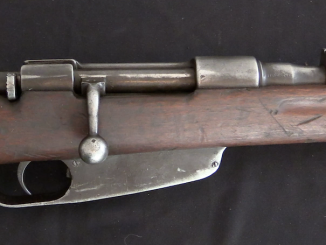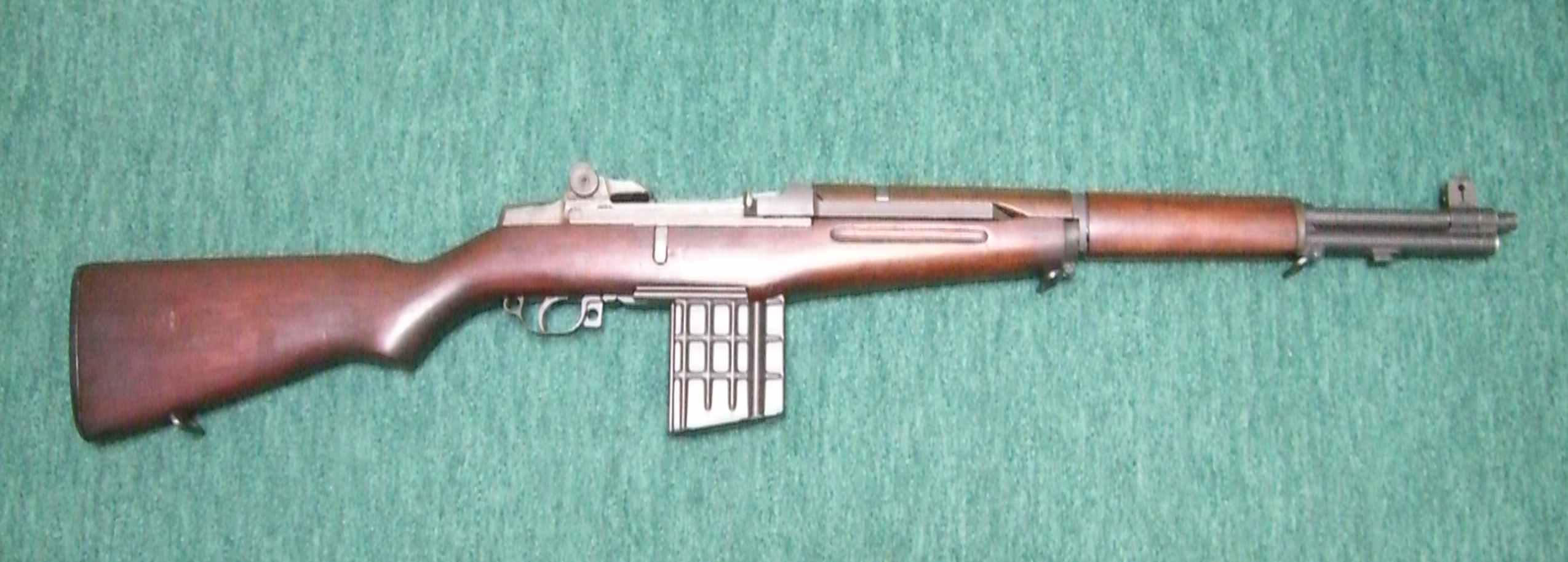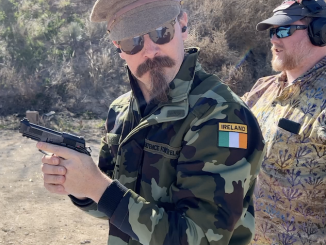With the development of the Model 1931, Beretta had nearly arrived at the first really popular pistol (the 1934/5). The 1931 was the result of taking the exposed-hammer 1923 design, shrinking the frame down to a more compact size and changing the caliber to .32 ACP (7.65mm Browning). This smaller cartridge reduced the need for slide weight and recoil spring strength for the simple blowback system (the recoil buffer from the previous 9mm Glisenti pistols was also rendered unnecessary).
The only step left between the 1931 and the really successful 1934 was to increase the size of the grip slightly to provide better handling. On fact, the 1931 and 1934 slides were identical – some early 1934 pistols can be found with 1931 slides overstamped to read 1934. This particular 1931 is a Royal Navy purchased example made in 1933.




“shrinking”
Shrinking and enlarging was apparently popular operation used by pre-WW2 automatic pistol manufacturer. I see two reason for that:
-it is easier to rework existing and well-working design than starting from scratch
-brand recognition – if earlier design is selling well then probably enlarged/shrinked version will also sell well
“probably enlarged/shrinked version will also sell well”
But this sometimes proves not true, see for example Hi Standard G-380:
http://unblinkingeye.com/Guns/G380/g380.html
which was .22 rim-fire automatic pistol to fire .380 Auto cartridge
Considering how similar the Beretta Model 1931 was to the 1934, I’m trying to understand why there is such a huge difference between their prices. I know the standard rationale always seems to involve the word “rarity” — even if two items might be identical in everything but name — but that also implies rarity in the current US market. They might be very common in other countries, and if an enterprising importer were to locate a huge cache in some country’s armory, we all know what that could do to current prices.
While I can fully understand the high prices collectors are willing to pay for a unique, one-off prototype — especially one with a distinct appearance and unorthodox engineering — I just don’t understand the attraction (& high price) of a “rare” nameplate or slight variation of a cheap mass-produced product.
Or maybe antique/collectable firearms are headed toward the same stage as collectible currency or baseball cards, where a simple manufacturing defect makes the value soar? I would hope not.
“pay”
Product value is equal to how many consumer want to pay for it.
“word “rarity””
I would rather say supply & demand. Bigger examples available – consumer willing ratio, smaller price.
“manufacturing defect”
Such examples would be rejected by quality control.
” “rare” nameplate”
Some collectors are searching for weapons of given manufacturer and then might want one which collection lack.
Handling aside, this pistol would make a great side-arm. I wonder if it would go great with a suppressor for noise reduction at the firing range (or for inflicting convenient “accidents” upon unpopular officers)…
Great for carrying around all the time, not so great for any kind of actual combat use… But certainly sufficient for the air force and navy officers the Italians issued its successor, the M1935.
“air force”
Luftwaffe during WWII also used .32 (7,65mm) automatic pistols, for example Pistole 37 (u) – http://hungariae.com/FromP37.htm
Most of the Beretta pistols are easy to fit with “accuracy tuners” due to the projecting muzzle at the front end of the slide. Thread it and forget it.
The major problems with the M1931/35 as carry guns are the butt, which doesn’t handle recoil well, and the Nambu/Eibar like safety, which is next to impossible to operate in a hurry; they must be carried Condition Two (hammer down on a loaded chamber) and thumb-cocked on the draw.
The later Model 70 solved both problems with a better-designed grip and a 1911-type thumb safety. The even later DA Model 82 and 84 got out of the whole mess with the DA system. The best version is the FN copy which has a fully-enclosed slide with an ejection port rather than the “open-top” version; dirt ingress is less likely, not to mention pocket bunny incursion.
However, I would point out that all of the above aren’t noticeably smaller in butt dimensions than a P-35 High Power. And not that much shorter front-to-back. The Argentine-made “Detective” version with the shortened 1911-style slide is actually slightly shorter in OAL than the compact Berettas.
If a compact single-action auto is the desired carry gun, a full-power 9 x 19mm is probably better than a .32 or .380, all other things being equal.
cheers
eon
I am pretty sure the Italian military carried them with an empty chamber, “Israeli style”, except perhaps when combat was imminent.
As for compact single-action only 9mm Parabellum pistols: not too many such pistols around, is there? All the SAO ones I can think of now are full size service pistols.
Eon:
The 1934 can be carried quite well with the hammer at half cock, and I think that would be a fairly safe way of carrying it. The safety catch is very awkward indeed, and only locks the trigger, not the hammer, so half cock might actually be safer.
For military use, I am sure it would have been carried without a round in the chamber.
So what about the 1934 with firing pin safety? I have a friend that just inherited one and I’m trying to find info and can’t find much. Other than very small numbers were produced. Anyone heard or seen them in the wild? Thanks.